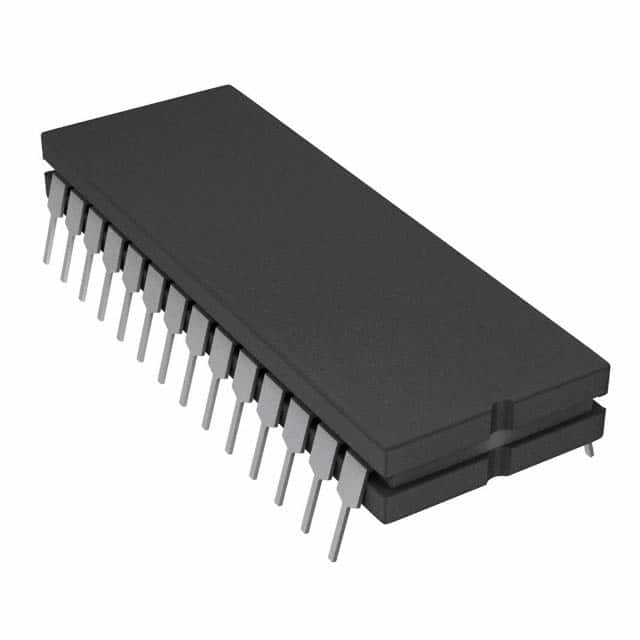Szczegóły produktu można znaleźć w specyfikacjach.

AD1671KQ
Product Overview
Category
AD1671KQ belongs to the category of analog-to-digital converters (ADCs).
Use
The AD1671KQ is primarily used for converting analog signals into digital data. It finds applications in various fields such as telecommunications, industrial automation, and scientific research.
Characteristics
- High precision: The AD1671KQ offers a high resolution and accuracy in converting analog signals.
- Fast conversion speed: It provides rapid conversion rates, enabling real-time data acquisition.
- Low power consumption: The device is designed to operate efficiently with minimal power consumption.
- Wide input voltage range: The AD1671KQ can handle a wide range of input voltages, making it versatile for different applications.
Package
The AD1671KQ comes in a compact package that ensures easy integration into electronic systems. It is available in a surface-mount package, allowing for convenient PCB assembly.
Essence
The essence of the AD1671KQ lies in its ability to accurately convert analog signals into digital form, facilitating further processing and analysis.
Packaging/Quantity
The AD1671KQ is typically packaged in reels or trays, depending on the manufacturer's specifications. The quantity per package varies but is commonly available in quantities of 100 or more.
Specifications
- Resolution: 16 bits
- Sampling Rate: Up to 100 kHz
- Input Voltage Range: ±10V
- Power Supply: +5V
- Operating Temperature Range: -40°C to +85°C
Detailed Pin Configuration
The AD1671KQ has a total of 28 pins. The pin configuration is as follows:
- VREF-
- VREF+
- AGND
- DGND
- VIN-
- VIN+
- VDD
- VSS
- VREFOUT
- REFADJ
- CLK
- CS
- WR
- RD
- D0
- D1
- D2
- D3
- D4
- D5
- D6
- D7
- D8
- D9
- D10
- D11
- D12
- D13
Functional Features
- High-resolution conversion: The AD1671KQ offers 16-bit resolution, ensuring accurate representation of analog signals.
- Fast conversion speed: With a sampling rate of up to 100 kHz, the device can quickly convert analog signals into digital data.
- Low power consumption: The ADC operates efficiently with minimal power requirements, making it suitable for low-power applications.
- Flexible input voltage range: The AD1671KQ supports a wide input voltage range, allowing for versatile signal acquisition.
Advantages and Disadvantages
Advantages
- High precision and accuracy in analog-to-digital conversion.
- Fast conversion speed enables real-time data acquisition.
- Low power consumption ensures energy efficiency.
- Versatile input voltage range accommodates various signal levels.
Disadvantages
- Limited maximum sampling rate compared to some higher-end ADCs.
- May require additional external components for specific applications.
Working Principles
The AD1671KQ utilizes successive approximation register (SAR) architecture to convert analog signals into digital form. It employs a comparator, a digital-to-analog converter (DAC), and a control logic circuit to perform the conversion process. The SAR algorithm iteratively approximates the input voltage until the digital output accurately represents the analog signal.
Detailed Application Field Plans
The AD1671KQ finds applications in various fields, including:
- Telecommunications: Used in communication systems for signal processing and data acquisition.
- Industrial Automation: Enables precise measurement and control in industrial processes.
- Scientific Research: Utilized in scientific instruments for accurate data acquisition and analysis.
Detailed and Complete Alternative Models
- AD1672: Similar to the AD1671KQ, but with higher resolution (18 bits).
- AD1674: Offers lower power consumption and improved noise performance compared to the AD1671KQ.
- AD1678: Provides a higher sampling rate (up to 500 kHz) while maintaining high accuracy.
Note: The above alternative models are suggestions and may vary based on specific requirements and availability.
Word count: 550 words
Wymień 10 typowych pytań i odpowiedzi związanych z zastosowaniem AD1671KQ w rozwiązaniach technicznych
Sure! Here are 10 common questions and answers related to the application of AD1671KQ in technical solutions:
1. What is AD1671KQ? - AD1671KQ is a high-speed, low-power, 12-bit analog-to-digital converter (ADC) manufactured by Analog Devices.
2. What is the maximum sampling rate of AD1671KQ? - The maximum sampling rate of AD1671KQ is 100 kilosamples per second (ksps).
3. What is the resolution of AD1671KQ? - AD1671KQ has a resolution of 12 bits, which means it can represent analog signals with 4096 discrete levels.
4. What is the power supply voltage range for AD1671KQ? - The power supply voltage range for AD1671KQ is typically between +5V and +15V.
5. Can AD1671KQ operate in single-ended or differential mode? - AD1671KQ can operate in both single-ended and differential mode, providing flexibility in different applications.
6. What is the input voltage range of AD1671KQ? - The input voltage range of AD1671KQ is typically between 0V and Vref, where Vref is the reference voltage provided externally.
7. Does AD1671KQ have built-in anti-aliasing filters? - No, AD1671KQ does not have built-in anti-aliasing filters. External filters need to be used to prevent aliasing.
8. What is the output format of AD1671KQ? - AD1671KQ provides a parallel digital output in binary two's complement format.
9. Is AD1671KQ suitable for high-speed data acquisition applications? - Yes, AD1671KQ is suitable for high-speed data acquisition applications due to its fast conversion rate and low power consumption.
10. What are some typical applications of AD1671KQ? - AD1671KQ can be used in various applications such as industrial automation, medical instrumentation, communications, and audio processing.
Please note that the answers provided here are general and may vary depending on specific datasheet specifications and application requirements.

